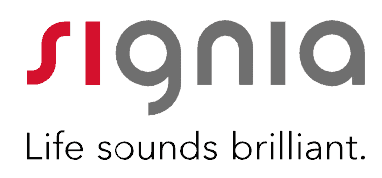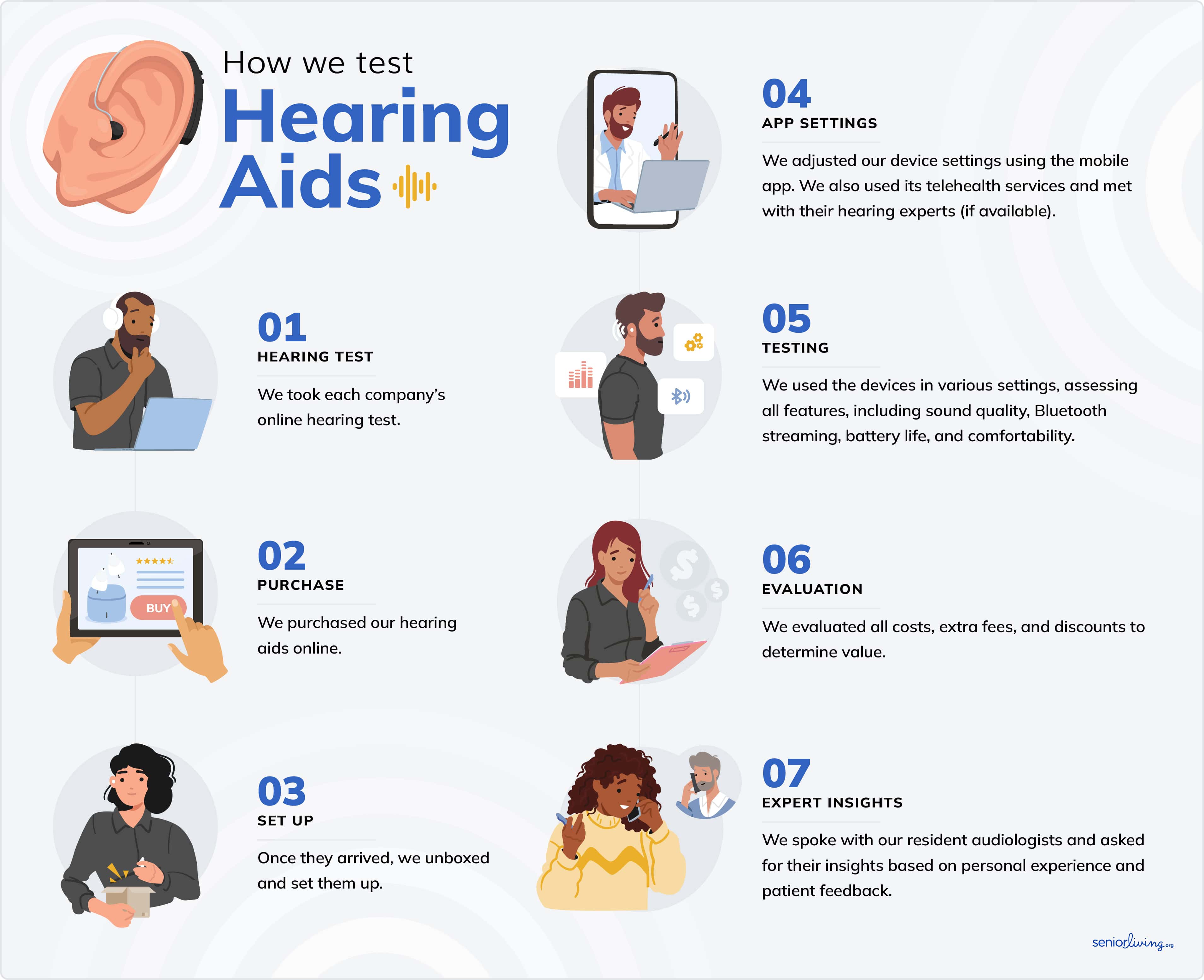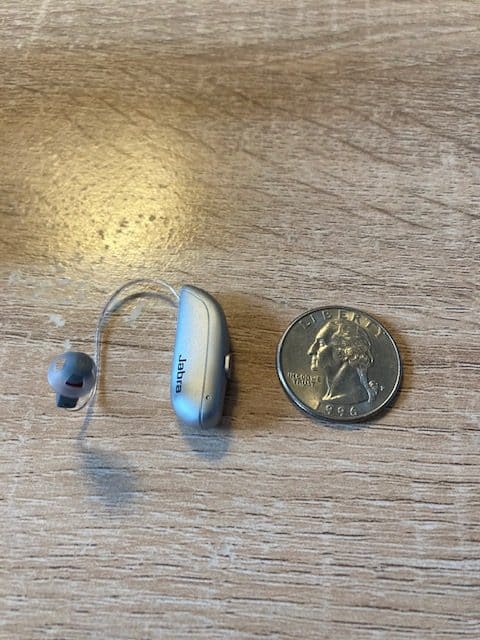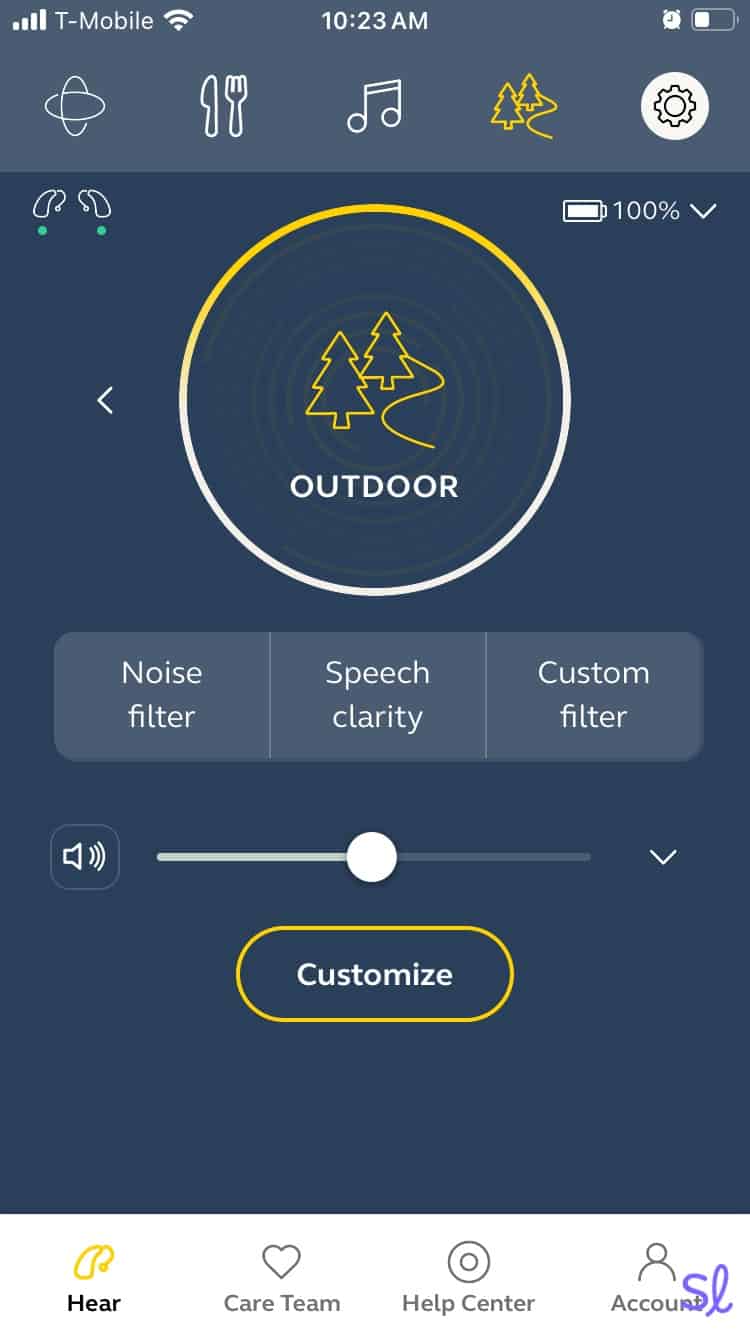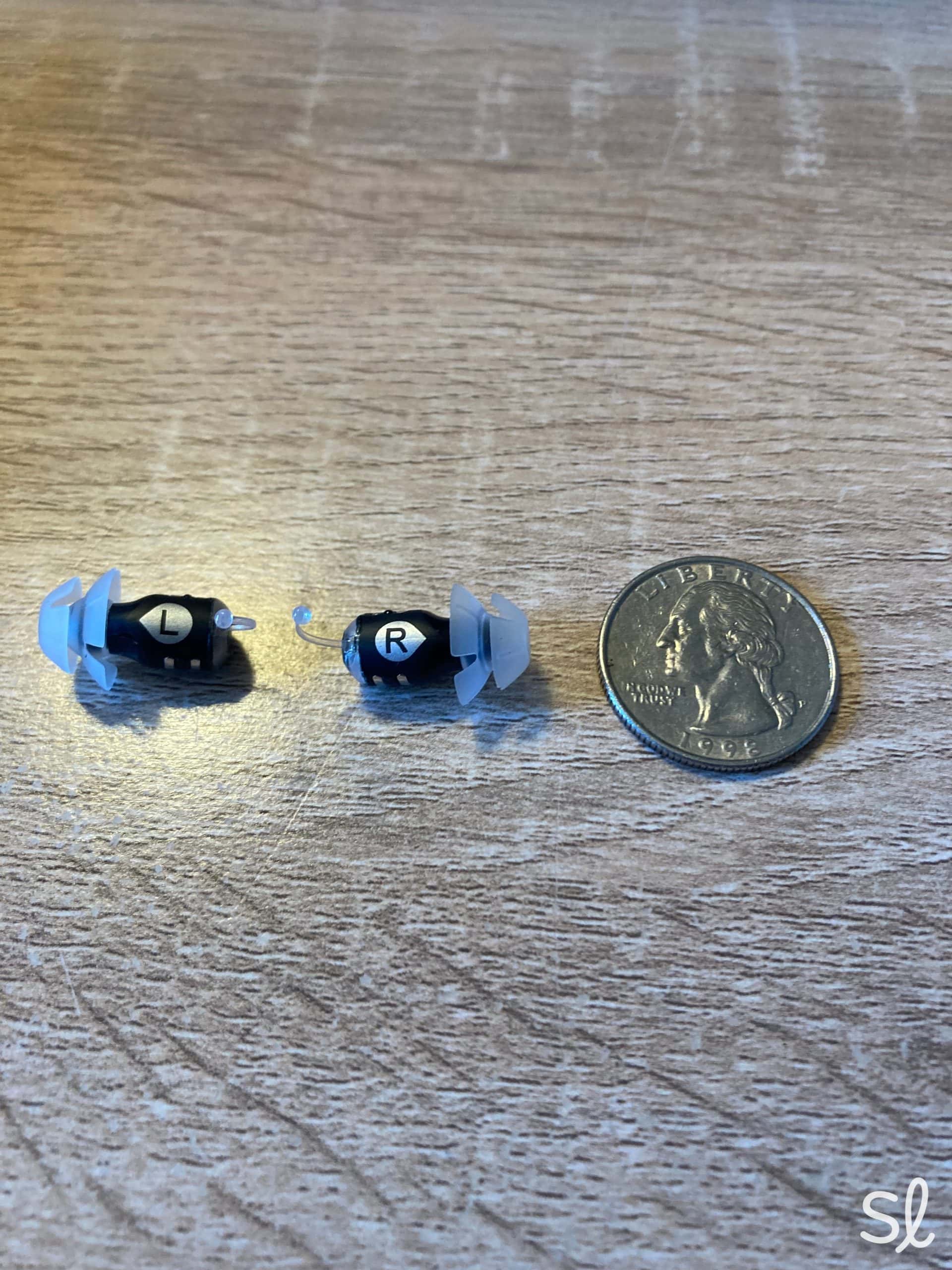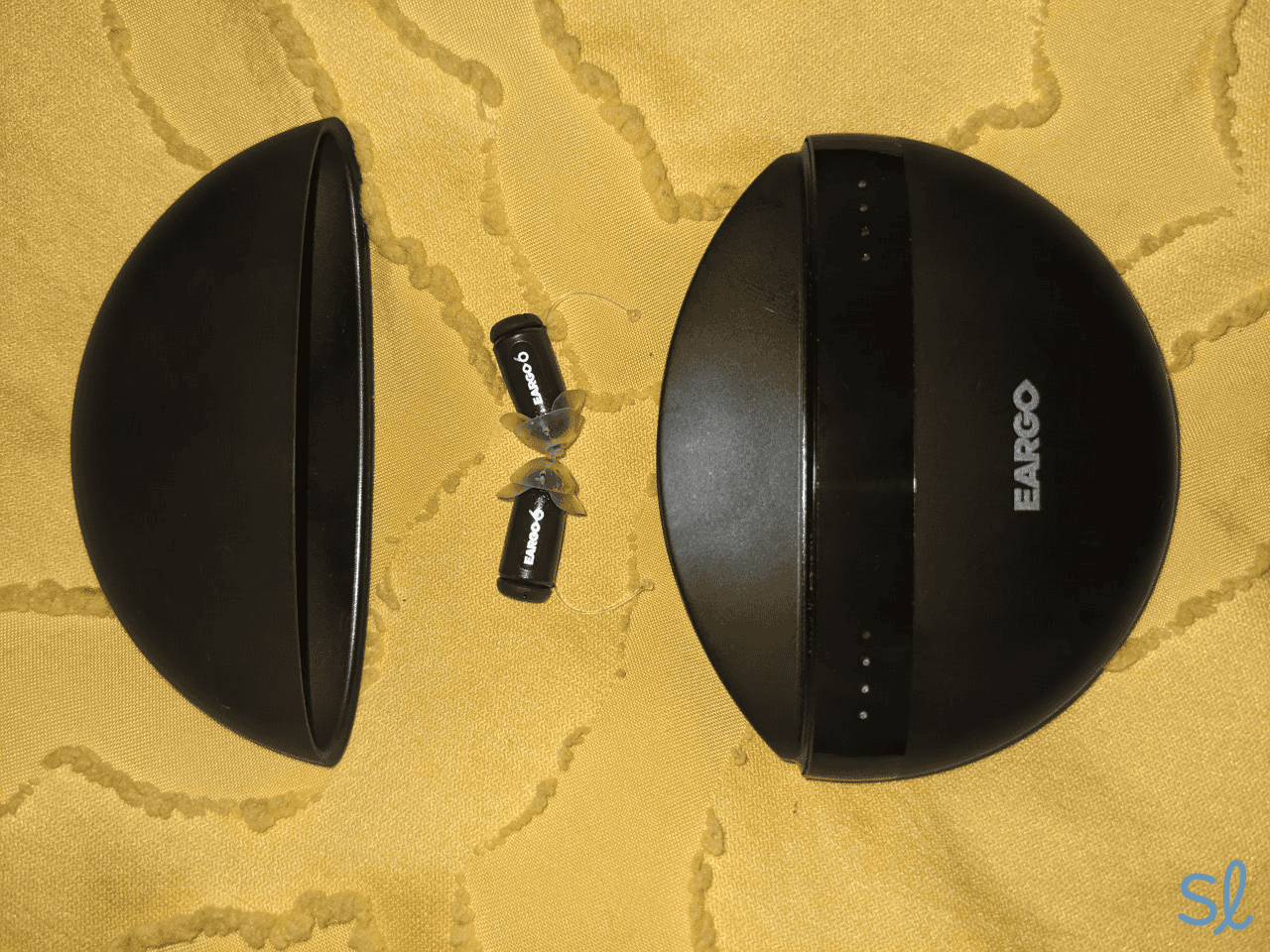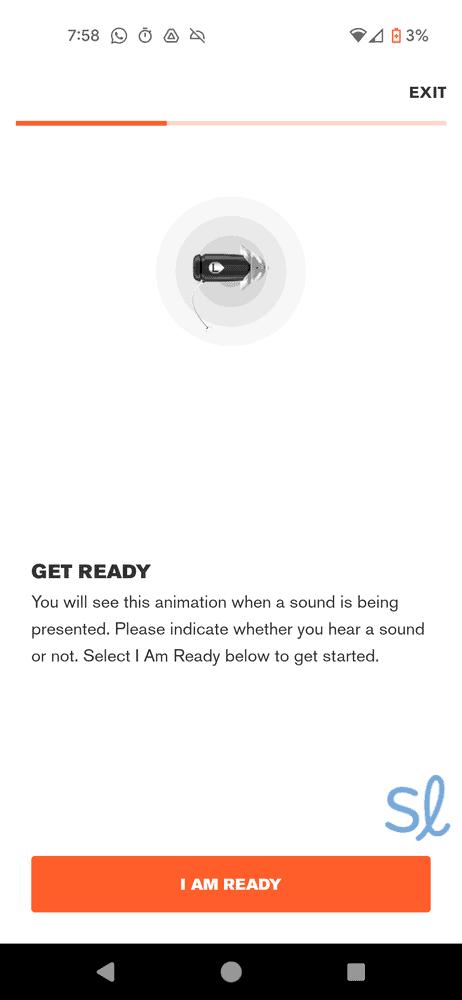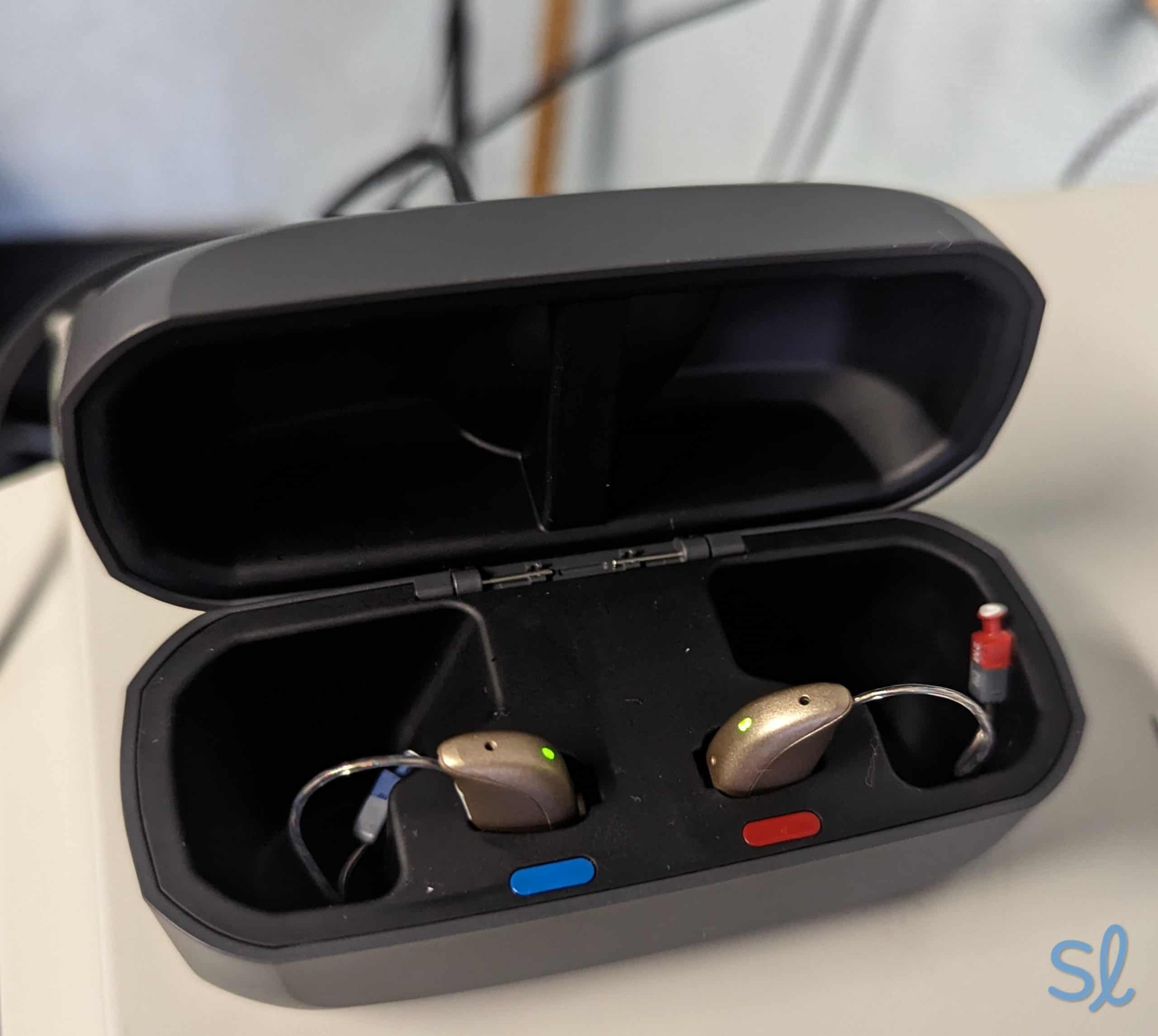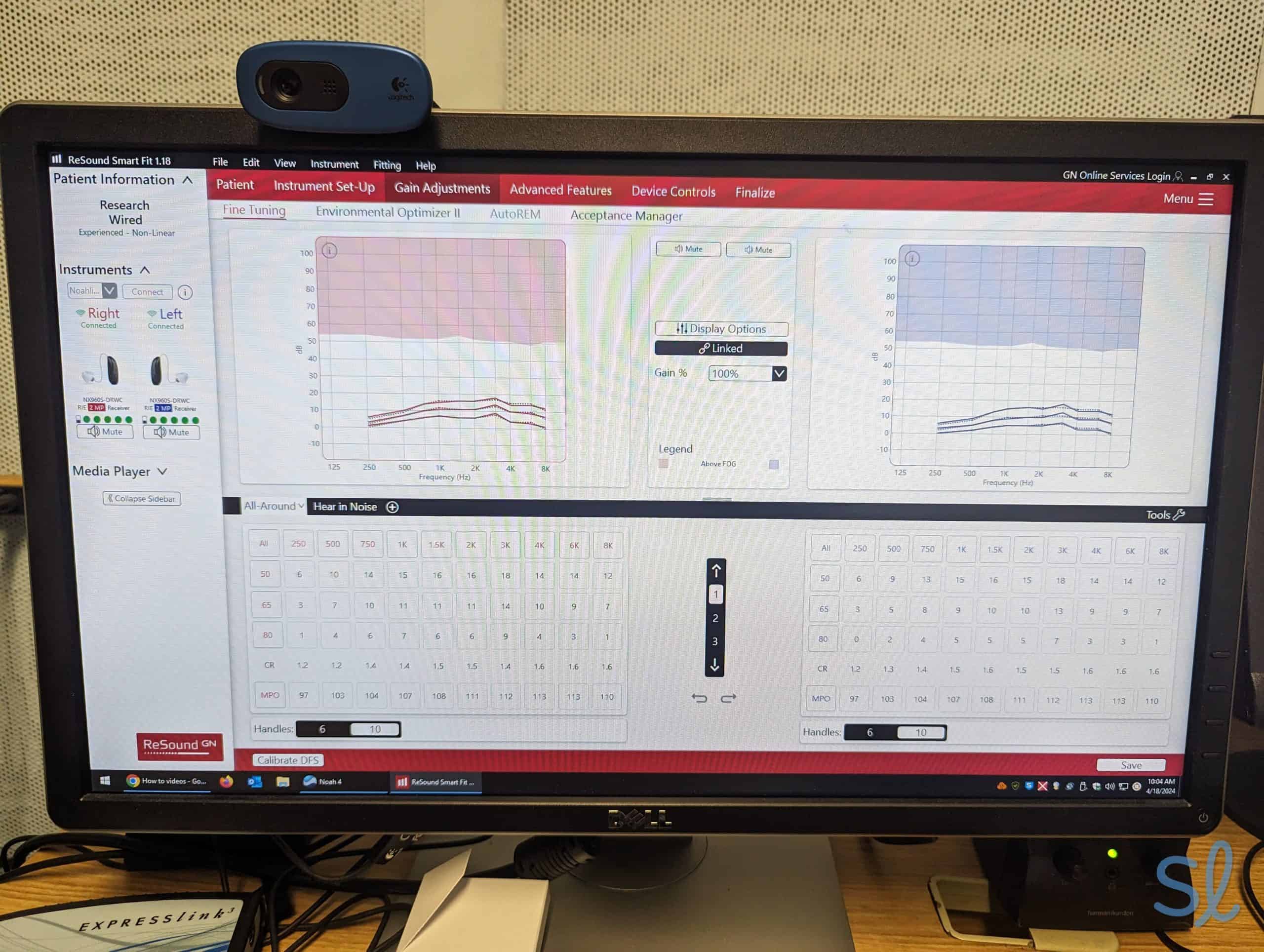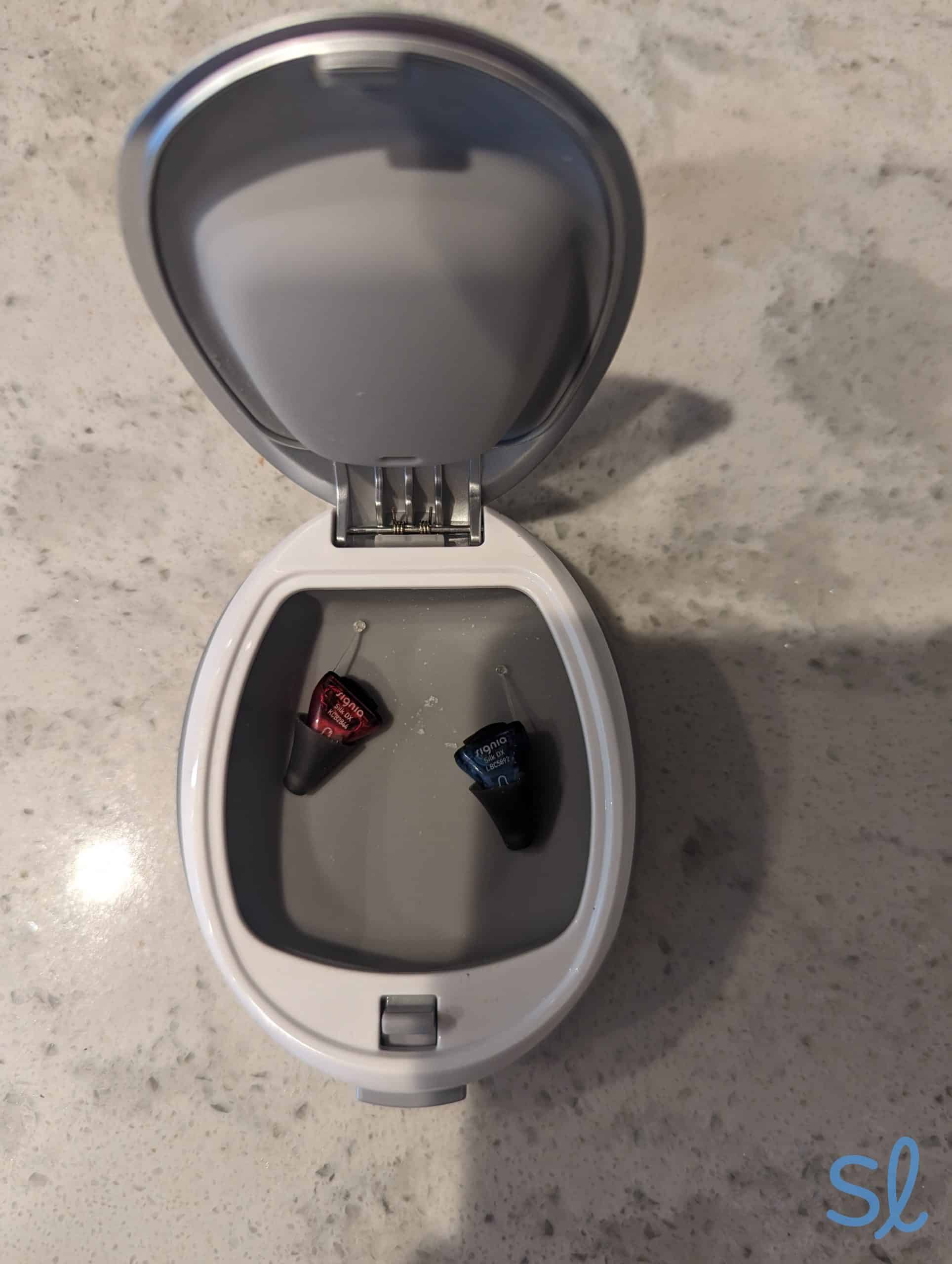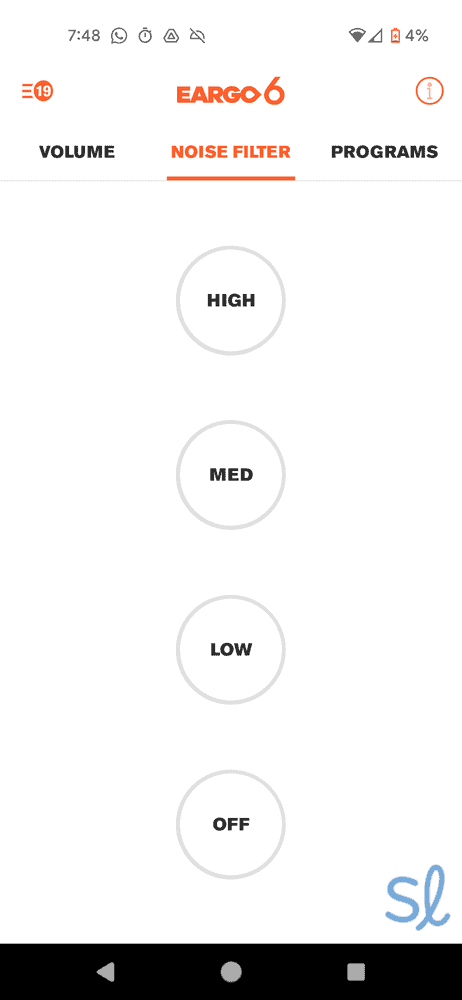Best Android-Compatible Hearing Aids, Tested and Reviewed by Audiologists
All of our top picks for Android-compatible hearing aids offer mobile apps, excellent value, and comfortable designs.
SeniorLiving.org is supported by commissions from providers listed on our site. Read our Editorial Guidelines
- Prices start at $995 per pair
- Behind-the-ear models
- Android mobile app for telecare and adjustments
- Prices start at $799 per pair
- In-canal and earbud-style models
- Adjustments and telecare support available in the mobile app
- Prices start at $2,000 per pair (estimated)
- Wide variety of hearing aid models
- Intuitive Android app for sound customization and 24/7 customer support
- Options for all levels of hearing loss
- Personalized listening experience
- BrainHearing technology
- Notch Therapy (NT) for tonal tinnitus
- Excellent styles and aesthetic appeal
- In-ear and BTE models
Our audiologists and senior tech experts tested the best Android-compatible hearing aids and narrowed down the list to our top picks.
Our audiologists and senior tech experts tested the best Android-compatible hearing aids and narrowed down the list to our top picks.
Learn MoreContents
There’s a lot to consider when purchasing hearing aids. If you’re an Android smartphone user, you may want a pair that’s compatible with your device. Doing so would give you access to features you’d otherwise miss out on. These include streaming calls and audio from your phone to your hearing aids and making adjustments to your hearing aid settings through an Android mobile app.
Our team of tech experts and resident audiologist, Dr. Ruth Reisman, have tested and reviewed the best hearing aids on the market to narrow down the list to our top picks. We evaluated factors like Android device compatibility, mobile apps, Bluetooth connectivity, price, and sound quality. Jabra Enhance won our top spot for, among many other reasons, their compatibility with a wide range of Android devices — both new and old. Below, we’ll explore our favorite Android-compatible hearing aids, along with features to look out for and how to connect your hearing aids to your Android device.
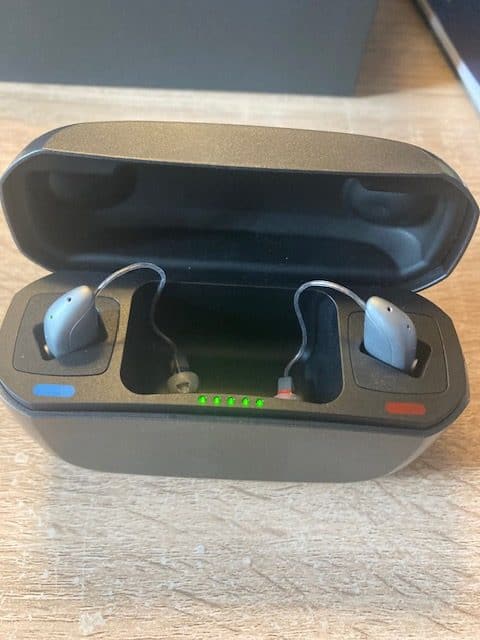
Our team tested all of the hearing aids that made our list, including Jabra Enhance, one top pick.

Best Hearing Aids for Android Phones in 2025
Our Methodology
How We Tested the Hearing Aids
Our tech team conducted over 100 hours of hands-on testing to compare the top hearing aids compatible with Android devices. We focused on a wide range of factors that could impact the usability of different models with Android phones. Also, we took notes on every aspect of our experience.
Here’s what our testing process looked like for OTC hearing aids that could be ordered online:
- We took each brand’s online hearing test, comparing our results to in-person evaluations from a licensed audiologist.
- Then, we selected our hearing aids and made our purchase, evaluating the overall purchasing process. We considered the price and value of each hearing aid model, keeping seasonal promotions, extra fees, and upfront costs in mind.
- Once the devices arrived, we followed the instructions to set them up. If the brand had a mobile app, we downloaded and set it up on our Android phones and tablets. We evaluated the ease of use. We also noted the total number of steps required to get our hearing aids out of the box and fully connected and functioning with our Android devices.
- We reached out to customer service several times to evaluate the quality of care by phone, mobile app (if applicable), and online chat features.
- Our team tested each hearing aid for a week — using them at home, in noisy environments, and in more intimate conversational settings. We evaluated the hearing aids’ features, sound quality, comfort, and ease of use in each location.
For prescription hearing aids that can’t be ordered online, we researched top brands with Android-compatible hearing aids. Then, we spoke with Dr. Reisman about each brand. We used her experience prescribing and testing these hearing aids, along with feedback from her patients, to evaluate and rank them.
How We Chose the Best Hearing Aids for Android
With so many options available, it’s hard to decide which hearing aids for Android phones to buy. We’ve narrowed down the choices to our top Android-compatible hearing aids that have been tested and approved by our resident audiologist, Dr. Ruth Reisman. We evaluated using the following criteria:
- Android system compatibility: Every provider on this list offers hearing aids that are compatible with Android devices, but some hearing aids will work with an Android phone you bought a decade ago, while others will work only with more recent Android smartphones and tablets.
- Price: We’ve included more affordable, over-the-counter (OTC) hearing aids on our list, along with pricier prescription hearing aids that offer solid value. This ensures that there are solid options for seniors shopping on a budget, as well as those who want to get hearing aids with all the bells and whistles.
- Bluetooth streaming: Bluetooth streaming is a great feature to pair with Android smartphones, but it’s not available from every provider. Be aware that not every provider on this list offers Bluetooth streaming, and you may need to pay a bit more or sacrifice other features to get it.
- Mobile app features: Having a useful mobile app is a big plus if you’re already accustomed to an Android smartphone or tablet. All of our top picks offer user-friendly mobile apps to customize your listening experience.
- Ease of use: Not all hearing aid users are tech-savvy, so we appreciate when providers make their products easy to use right out of the box. All of our top picks are easy enough for most seniors to start using without much (if any) assistance.
- Comfort and design: Whether you want a basic behind-the-ear hearing aid or a discreet, completely-in-canal model, we included something that’s comfortable for everyone.
Why Trust Us
Our tech team tries out the latest gadgets for seniors each year. We’ve logged hundreds of hours testing and reviewing hearing aids from dozens of providers. To ensure the best possible information, we also work directly with experts like our resident licensed audiologist, Dr. Ruth Reisman. She has personally tested or prescribed hearing aids from every provider on this list and has given her seal of approval for our top picks. She also discussed her experiences helping patients set up their Android-compatible hearing aids. Dr. Reisman has over three decades of experience working with older adults with hearing loss, so we take her word seriously!
-
1. Jabra Enhance - Most user-friendly
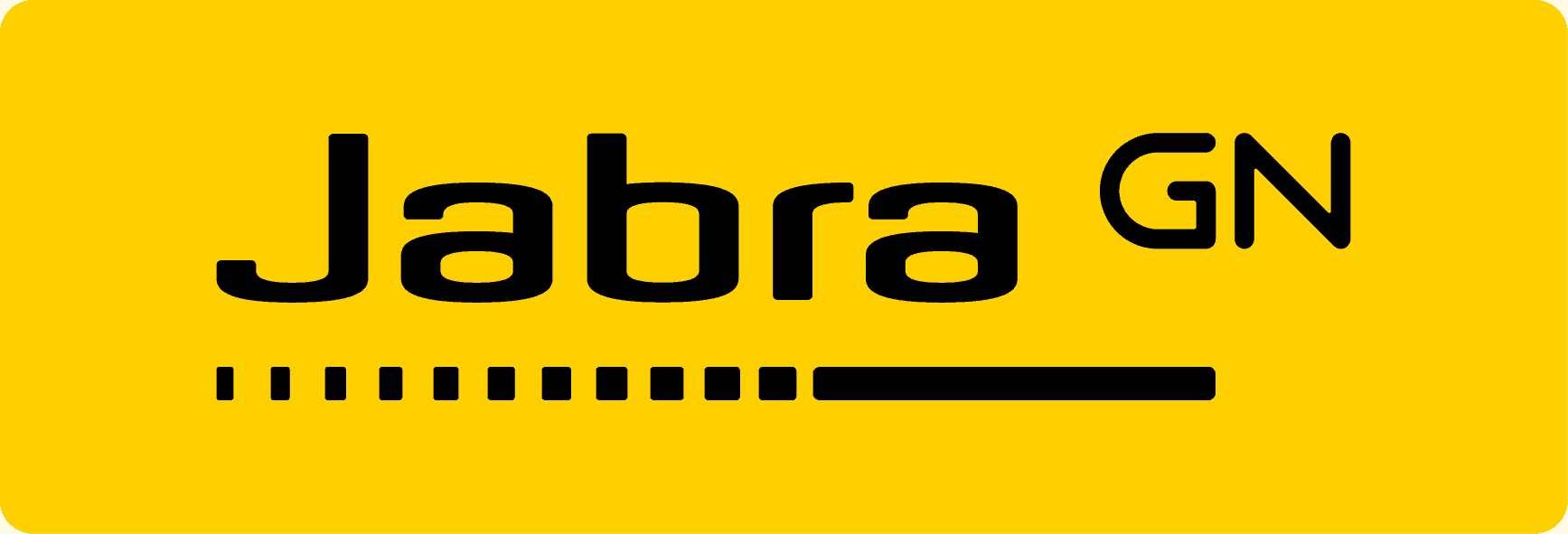 See Pricing Links to Jabra Enhance
See Pricing Links to Jabra EnhanceWhat we like most
- Prices start at $995 per pair
- Behind-the-ear models
- Android mobile app for telecare and adjustments
 Jabra EnhanceSee Pricing Links to Jabra EnhanceOverview:
Jabra EnhanceSee Pricing Links to Jabra EnhanceOverview:Jabra Enhance, formerly known as Lively, has set itself apart by offering advanced OTC hearing aids, convenient follow-up care, and an easy-to-use mobile app. All three Jabra Enhance hearing aids — Enhance Select 500, Enhance Select 300, and Enhance Select 50R — offer direct Bluetooth streaming to compatible Android devices with a minimum Android OS version 10 and Bluetooth 5.0. Listen to calls, music, and other phone audio directly from your hearing aids. Providers such as Eargo offer a few Bluetooth-enabled hearing aids, so if you regularly stream from your Android phone via Bluetooth, Jabra Enhance is the way to go.
» Our Full Review: Jabra Enhance Hearing Aids Review 2025
Do you have an older Android device? No problem! Like ReSound, Jabra Enhance offers an accessory called the Phone Clip+ to pair your Jabra Enhance hearing aid with older Android phones and other Bluetooth-enabled devices. It even doubles as a remote control.
Did You Know? There are nearly 29 million Americans who could benefit from using hearing aids but have yet to purchase a pair.1
One of our favorite things about Jabra Enhance is the mobile app, which can be downloaded on Android phones. Using the app, we could easily make adjustments and request appointments with an audiologist. Premium packages offer three years of follow-up audiology care, which is worth every penny to ensure you get the best and most customized listening experience.
Expert InsightsFrom Audiologist Dr. Ruth Reisman,With superior sound quality, seamless connectivity, innovative design, advanced noise cancellation, and versatile applications, Jabra Enhance consistently delivers exceptional audio solutions that enhance productivity, entertainment, and communication clarity. If you’re tech-savvy, Jabra Enhance is a great solution for Android users.Pros & Cons:Pros About Jabra Enhance
- Easy-to-follow instructions and user-friendly mobile app
- Bluetooth streaming
- Three-year warranty and virtual audiologist care included with premium packages
- Available to purchase online
- Rechargeable and battery-powered models
- 100-day risk-free trial
Cons About Jabra Enhance
- Not for severe or profound hearing loss
- Only behind-the-ear models available
Our Hands-on Experience:Mobile App
We found using the Jabra Enhance mobile app both easy and practical. It took us two attempts to sync the Jabra Enhance 300 hearing aids with our phones, but once they were synced, it was really simple to make adjustments and save our preferred settings.
Making adjustments using the Jabra Enhance mobile app
Pro Tip: If you have hearing loss in one ear, consider that Jabra Enhance also made it on our list of the best hearing aids for single-sided hearing loss!
We could adjust the volume, customize noise filters based on our sound environment, and even request a professional adjustment from someone at Jabra Enhance — all from the mobile app. The app also has tons of useful videos to teach users how to do multiple things, from using the app to putting in hearing aids.
We used the app to request a video appointment with an audiologist, who walked us through using the hearing aids and the mobile app. She also helped us change the connection wires to ensure the best fit.
Pricing
We love that Jabra Enhance's pricing is transparent. Prices range from $995 to $1,995 per pair, depending on the model and type of package (Premium or Basic) you choose. Jabra Enhance also offers monthly financing. Some models from Eargo can easily cost twice as much without adding a lot of extra features or benefits. Plus, Jabra Enhance Premium packages include a three-year warranty, three-year loss and damage protection, and three years of virtual audiologist care. We think the three years of virtual audiologist care alone justifies the extra $200.
FYI: Are you an iPhone user? Check out our roundup of the best iPhone-compatible hearing aids.
-
2. Eargo - Most discreet design
 See Pricing Links to Eargo
See Pricing Links to EargoWhat we like most
- Prices start at $799 per pair
- In-canal and earbud-style models
- Adjustments and telecare support available in the mobile app
 EargoSee Pricing Links to EargoOverview:
EargoSee Pricing Links to EargoOverview:Eargo SE hearing aids are small and fit in the canal, making them very discreet.
If you want a discreet hearing aid that won’t interfere with your ability to take phone calls, consider Eargo. The provider sells three in-canal models that sit completely in your ear and are nearly invisible. They mimic normal ear function as you talk on the phone, so you’ll have no trouble hearing who’s on the other end. Jabra Enhance devices are not too noticeable, but they can’t compare with the size and discretion of the Eargo 7, Eargo SE, and even the earbud-style LINK by Eargo.
» Buyer’s Guide: How to Choose a Hearing Aid
Because of their tiny size, Eargo’s in-canal hearing aids aren’t Bluetooth-enabled. Unlike Jabra Enhance, you can’t stream calls or media from your Android phone. You can, however, make adjustments and access lifetime telecare support using Eargo’s mobile app on an Android phone (much like you can with Oticon). And although the hearing aids themselves aren’t Bluetooth-ready, the charging case is. Simply place the hearing aids in the charging case and then connect it to your Android phone.
Testing out the Eargo 6 with its charging case
Fortunately, the LINK by Eargo earbud-style hearing aids are Bluetooth-ready — and they’re the most affordable Eargo model. We could easily make calls or listen to music while wearing these devices. And since they looked like earbuds, no one knew we were wearing hearing aids!
Why Dr. Reisman Likes Eargo: “I like the Eargo 7 due to the increased warranty, enhanced clarity, and moisture resistance, which is a necessity with a completely in-the-ear device.”
Pros & Cons:Pros About Eargo
- Nearly invisible design
- Lifetime support from licensed hearing professionals
- Two-year warranty with Eargo 7
- Rechargeable case
- No prescription needed
Cons About Eargo
- Not for severe to profound hearing loss
- Cannot stream media to Eargo 6, Eargo 7, or Eargo SE
Our Hands-on Experience:Mobile App
With Eargo hearing aids, we could talk on the phone just like we did before we wore hearing aids. There is no direct Bluetooth streaming with the higher-end models, but you can still adjust any models through Eargo’s Android mobile app. One of our favorite app features is Sound Match, a 20-minute hearing test that adjusts your hearing aid settings. Our hearing aids worked more effectively and produced better sound after taking the Sound Match test than they did using a preset program.
We took Eargo's Sound Match hearing test, which adjusts your devices to better fit your hearing loss.
The mobile app is pretty easy to use and offers many of the features we’ve expected (manual volume control, adjustable programs for different environments, etc.), but the app is not compatible with the LINK by Eargo model. That means Eargo makes you choose between Bluetooth-ready hearing aids and a user-friendly mobile app. It doesn’t offer both like Jabra Enhance does.
Expert InsightsFrom Audiologist Dr. Ruth Reisman,Eargo recently expanded its portfolio to include prescription hearing aids that can be programmed by an audiologist to fit your exact hearing loss. Eargo is always looking to innovate and stay at the forefront of effective hearing technology.Pricing
Eargo prices range from $799 to $2,699 per pair, placing them in the midrange for hearing aid costs. The LINK by Eargo is not the cheapest OTC model on the market, but it is still less expensive than any of Jabra Enhance’s offerings (and far more discreet). However, the Eargo 7, Eargo’s top-of-the-line model, costs $2,699 per pair, almost $1,000 more than Jabra Enhance’s top-tier package.
» Our Full Review: Eargo Hearing Aid Review
Eargo offers a monthly financing option with payment plans as low as $23 per month, depending on your chosen model. Given the advanced features and lifetime hearing care, Eargo delivers solid value.
Expert InsightsFrom Audiologist Dr. Ruth Reisman,Some Android phones contain the ASHA protocol, which allows for bimodal streaming to two different devices, such as a hearing aid and a cochlear implant. -
3. ReSound - Best Bluetooth connectivity
 See Pricing Links to Zip Hearing
See Pricing Links to Zip HearingWhat we like most
- Prices start at $2,000 per pair (estimated)
- Wide variety of hearing aid models
- Intuitive Android app for sound customization and 24/7 customer support
 ReSoundSee Pricing Links to Zip HearingOverview:
ReSoundSee Pricing Links to Zip HearingOverview:Testing out ReSound BTE hearing aids
ReSound has been one of the top providers of medical-grade hearing aids for decades, and it continues to bring innovation with new and improved devices. Whether you have mild hearing loss, profound hearing loss, or something in between, ReSound has devices that can meet your needs. The company also offers IIC, CIC, and BTE models. ReSound has far more hearing aid options than Jabra Enhance or Eargo, but you’ll have to meet with an audiologist to get fitted for a pair.
» Compare Providers: ReSound vs. Signia
What sets ReSound apart from other Android-compatible hearing aids is the company’s dedication to preparing for the next generation of Bluetooth connectivity. All of ReSound’s current hearing aids are designed for Auracast, which allows connections from a single source device (like your Android phone) to an unlimited number of receiving devices, including headphones, speakers, and ReSound hearing aids. That’s great for older adults who are a bit more tech-savvy and want to enjoy music, movies, videos, and more on multiple devices simultaneously. ReSound’s compatibility with LE Audio also ensures that its hearing aids will work with the next generation of Bluetooth devices.
Why Dr. Reisman Likes ReSound: “Resound is at the forefront of device connectivity with Auracast.”
Pros & Cons:Pros About ReSound
- Advanced Bluetooth connectivity via Auracast and LE Audio
- Remote care via Assist Live app
- Discreet in-canal and BTE hearing aids
- Triple-microphone system mimics natural hearing
- Models for all levels of hearing loss
- Rechargeable options
Cons About ReSound
- Requires an in-person appointment and fitting
- Pricing not available online
Our Hands-on Experience:Mobile App
ReSound offers multiple mobile apps that serve different purposes. It may get a little confusing for less tech-savvy seniors, especially since some of ReSound’s mobile apps are not compatible with all Android devices. The provider used to have three apps, but it has since reduced them to just two: the ReSound Smart 3D app for general audio adjustments and settings and the Tinnitus Relief app to help manage tinnitus symptoms.
» Our Full Review: ReSound Hearing Aid Reviews From an Audiologist
Both apps work well, but it may not be ideal for some seniors to switch back and forth between the two. Plus, ReSound optimizes its apps for Apple devices, but the provider doesn’t guarantee that either app will work on all Android devices. That’s something to consider if you have an older Android smartphone. The Tinnitus Relief app is a favorite among audiologists, so it’s worth checking if your device is compatible. Dr. Reisman recommends the app to all of her patients.
» Useful Resource: Best Hearing Aids for Tinnitus
Pricing
Since ReSound doesn’t list its prices on its website, it can be difficult to know exactly how much you’ll pay for a pair. Prices vary by model and location, but Dr. Reisman estimates that a single ReSound hearing aid will typically cost between $1,000 and $3,750. You’ll double those prices if you need a pair, which means ReSound can get pretty expensive, especially compared to OTC providers such as Jabra Enhance and Eargo.
Did You Know? Roughly 42 percent of Americans with hearing loss are ages 65 or older. Learn more from our OTC hearing aid study.
ReSound and other prescription hearing aids, however, provide a level of support that OTC brands simply can’t offer. Your audiologist or hearing care professional will help you choose the hearing aid that’s best for your hearing loss and customize it to your needs. There are options available for severe and profound hearing loss, which isn’t the case with OTC brands like Eargo.
» Also Check Out: Best Hearing Aids for Severe Hearing Loss in 2025
Dr. Reisman can make adjustments to ReSound hearing aids to best suit her patient's needs
-
4. Oticon - Most durable devices
See Pricing Links to Zip HearingWhat we like most
- Options for all levels of hearing loss
- Personalized listening experience
- BrainHearing technology
OticonSee Pricing Links to Zip HearingOverview:Testing out Oticon hearing aids
Oticon is one of the most trusted names in the hearing aid industry. One of our resident audiologists, Dr. Brad Ingrao, has over 30 years of experience fitting patients with Oticon hearing aids — including a few of his family members! Like ReSound, Oticon devices are using the latest tech via Auracast, making the provider’s hearing aids compatible with the next generation of Bluetooth-ready devices, including many of the latest Android smartphones.
» Compare Providers: ReSound vs. Oticon
If you’re looking for Android-compatible hearing aids that can stand the test of time, Oticon has many options. The Oticon Intent, released in 2024, offers 4D sensors that work to predict your listening behaviors and preferences. The discreet Oticon Real and Oticon Own product lines, as well as the larger Oticon Xceed models (for mild to profound hearing loss), are designed to resist dust, debris, and everyday wear and tear. If you run into any issues, Oticon offers a warranty for up to four years. Like ReSound, Oticon’s warranty works internationally, with a sizable network of providers across the globe.
Expert InsightsFrom Audiologist Dr. Ruth Reisman,Oticon is looking to the future of Bluetooth connectivity. It also places hearing science at the forefront of its innovations. The new Intent model, for example, uses gyroscopes to detect the listener’s head movement to enhance speech in the direction they’re facing.Pros & Cons:Pros About Oticon
- Advanced Bluetooth connectivity via Auracast
- Models for any degree of hearing loss
- Advanced tech to intuit listening preferences
- Comprehensive Oticon Companion app
- Discreet in-canal and BTE models
- International warranty
Cons About Oticon
- Prices are not available online
- Compatible only with Android 8 or later
Our Hands-on Experience:Mobile App
The Oticon Companion app is an all-in-one app for managing your hearing devices from day one. You’ll need to meet with an audiologist to get fitted, but the app can help you with day-to-day adjustments. From changing the volume in each hearing aid to pinpointing the location of your devices if you lose them, the Companion app can do it all. One thing that may get confusing is that Oticon discontinued its previous app, Oticon ON, in favor of Oticon Companion. Companion is new and improved, but, like Oticon’s devices, it’s compatible only with Android 8 or later.
» Our Full Review: Oticon Hearing Aid Reviews
Pricing
Like ReSound and Signia, Oticon doesn’t advertise its prices. That can make it challenging to know if the provider is a good fit for your budget. According to Dr. Reisman, you can expect similar prices with many big prescription hearing aid providers — between $1,000 and $3,750 per hearing aid (double for a pair). That may be too much for some, but it’s important to remember that Oticon offers options for mild to profound hearing loss, as well as some of the latest technology for Bluetooth connectivity and machine learning to personalize your listening experience.
-
5. Signia - Best companion app
See Pricing Links to Zip HearingWhat we like most
- Notch Therapy (NT) for tonal tinnitus
- Excellent styles and aesthetic appeal
- In-ear and BTE models
SigniaSee Pricing Links to Zip HearingOverview:Trying out Signia's Silk hearing aids
Signia offers rechargeable models of all shapes and sizes, including larger models for profound hearing loss (like the Pure Charge & Go IX) and more discreet models for mild to moderate hearing loss (like the Silk Charge & Go IX). Whether you want something discreet or robust with all the latest features, Signia has something for you.
» Compare Providers: ReSound vs. Signia
Signia also ranks on our list of the best rechargeable hearing aids, with some models that can last for up to 61 hours on a single charge. That’s a great feature for older adults with dementia or those who forget to plug in their hearing aids from time to time. The battery life is especially impressive compared to providers such as Eargo, which have a maximum of 16 hours on one charge.
Expert InsightsFrom Audiologist Dr. Ruth Reisman,Signia is ideal for my patient base with auditory-processing disorders. The company also offers multiple useful hearing tools beyond amplification and Bluetooth.Pros & Cons:Pros About Signia
- Intuitive Android app for sound customization and 24/7 customer support
- Wide variety of Android-compatible hearing aid models
- Options for mild to profound hearing loss
- Tinnitus-management features
- Extended battery life on a single charge
Cons About Signia
- Only compatible with Android 8.0 or later
- Prices are not available online
- Requires an audiologist fitting
Our Hands-on Experience:Mobile App
Signia arguably has the most advanced mobile app of any major hearing aid provider. Oticon’s Companion app is quite good, but we think the Signia app provides a better all-around experience for seniors with hearing loss. The app offers many of the basics you would expect, such as volume control and setting adjustments based on the user’s environment. The app also tracks overall well-being by functioning as a step and activity tracker. That includes tracking how often users are engaging in conversations, which is vital for seniors who may feel less confident about speaking with hearing loss. Lastly, the app features a 24/7 chat assistant that can help with everything from changing settings to answering questions about your device.
» Our Full Review: Signia Hearing Aid Reviews
Pricing
Signia doesn’t offer its pricing online. Instead, you’ll need to meet with an audiologist to find the right Signia model for you and get a quote. Dr. Reisman estimates that most Signia models cost somewhere between $1,000 and $3,750 per hearing aid, similar to ReSound and Oticon. Also like those providers, Signia offers a lot of excellent features to justify the price, including advanced tinnitus-management features and a useful mobile app.
» Related Reading: Best Hearing Aids for Active Lifestyles
The Runners-Up
Below are a few hearing aid brands that didn’t make our top picks but may be a good option for some users on a budget.
- Lexie: Lexie is a great choice for Android users who want simple hearing aids they can set up at home with the user-friendly app. Check out what else we love in our latest Lexie hearing aid review.
- Otofonix: Otofonix makes hearing solutions accessible to all seniors, no matter their budget. With BTE models as low as $249 per pair, it’s difficult to compete with the brand’s prices. To learn more about Otofonix, check out our 2025 Otofonix review.
» For Budget Shoppers: Best Cheap Hearing Aids for Seniors
What Are Android-Compatible Hearing Aids?
Many hearing aid providers develop hearing aids that connect directly to Android devices such as phones and tablets. If you have Android-compatible hearing aids and a compatible Android device, you can stream calls, audio, music, audiobooks, and more directly to your hearing aids.
» You Might Like: The Best Android Phones for Seniors
Even if direct streaming isn’t available, there are still other benefits you can enjoy from Android-compatible hearing aids — many of which you can access after downloading the manufacturer’s mobile app.
Most hearing aid apps for Android phones offer features such as:
- Taking a hearing test
- Changing the volume of your hearing aids
- Switching between modes or preprogrammed settings
- Adjusting settings
- Accessing remote telecare for fitting, hearing aid adjustments, and troubleshooting
How to Choose the Best Android-Compatible Hearing Aid for Me
Here are some of the top things you’ll want to think about before purchasing an Android-compatible hearing aid:
- Budget: Android-compatible hearing aids can cost anywhere between a few hundred and a few thousand dollars per pair. You’ll want to have a price in mind ahead of time to ensure you don’t go over budget.
- Device compatibility: Double-check with the provider to ensure that your desired model is compatible with your specific Android phone. If you plan on upgrading your phone soon, also make sure that the provider offers regular updates; they should be keeping their hearing aids compatible with the latest Android tech.
- Level of hearing loss: Most OTC hearing aids only work for mild to moderate hearing loss. If you have severe or profound hearing loss, you’ll need a prescription. Consequently, your level of hearing loss could affect which providers offer Android-compatible hearing aids that meet your needs.
- Style and design: Most BTE hearing aids are relatively large, which might suit older adults who worry about misplacing their devices. Alternatively, ITE and CIC models are much more discreet, though they could be easier to lose. You’ll want to consider which style and design of hearing aid best meets your needs and preferences.
FYI: If you know you want a hearing aid that fits snugly behind your ear, check out our guide to the best BTE hearing aids!
How Do I Connect My Hearing Aids to My Android Phone?
Many smartphone manufacturers produce phones with Android operating systems, so exact instructions for pairing your hearing aids to your Android phone may vary. You can generally try two methods to pair your hearing aids with your Android phone.
Method 1: Via Phone Settings
If you’ve ever paired a Bluetooth device (such as headphones or a speaker) to your phone, you’re already familiar with pairing Bluetooth hearing aids. For many Android OS phones, the process looks like this:
- Open the Settings app.
- Click “Connected devices.”
- Click “Pair new device.”
- Select your hearing aid from the list of available devices.
- After the first hearing aid connects, select the second, if applicable.
Method 2: Via Mobile App
Most hearing aid providers include connection instructions during setup for the mobile app. If you plan to use a mobile app with your hearing aids, download it from the Google Play store. Then, follow the on-screen directions to connect your Bluetooth hearing aids.
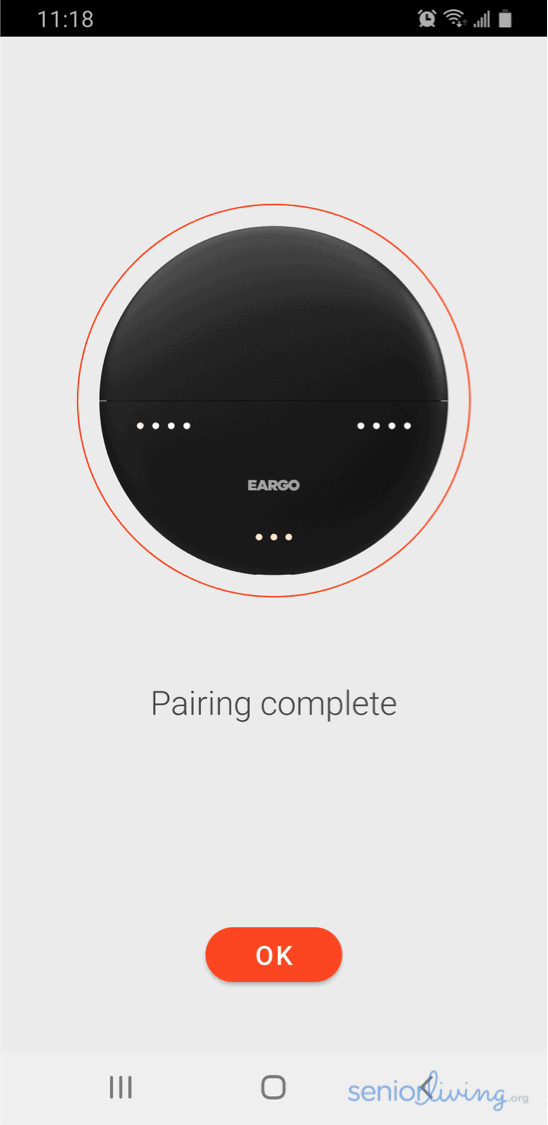
Many hearing aid brands make it easy to pair hearing aids with your phone through the Android mobile app.
The Difference Between Android and iPhone Hearing Aid Connections
While Bluetooth tech allows many hearing aids to stream from Android and iPhone devices, the protocols used to measure compatibility and connectivity differ between the two phone manufacturers.
Did You Know? According to Signia, there are at least 40 Android ASHA-supported devices on the market.2
Android’s Audio Streaming for Hearing Aids (ASHA) and Apple’s Made-for-iPhone (MFi) protocols are designations; they ensure compatible hearing aids have met each manufacturer’s standards for connectivity to stream audio seamlessly from Android phones and iPhones, respectively. That said, ASHA and MFi are functionally the same; they just set standards to ensure streaming compatibility with different devices and operating systems. For an Android phone to meet the ASHA protocol, it must be running Android 11 or later.3
Frequently Asked Questions About Hearing Aids for Android
-
Which hearing aids are compatible with Android phones?
A variety of hearing aids are Android-compatible, including models made by Oticon, Phonak, ReSound, Beltone, Starkey, Widex, Jabra Enhance, and more.
-
How do I know if my phone is compatible with Bluetooth hearing aids?
Visit the hearing aid provider’s website or speak with your audiologist to determine whether your Android phone is compatible with your Bluetooth hearing aids. Just because both devices have Bluetooth technology doesn’t mean you can stream from your phone to your hearing aids.
-
Can Galaxy Buds Pro replace hearing aids?
In 2021, a study found that conventional hearing aids far outperformed the Galaxy Buds Pro.4 Some participants with mild to moderate hearing loss, however, reported that Galaxy Buds Pro devices were beneficial to their hearing in quiet environments. The Galaxy Buds Pro isn’t a suitable replacement for hearing aids, but their amplification setting may help some wearers.
-
Where do I get the right hearing aid app for Android phones?
The instructions included with your hearing aids should contain information about any compatible mobile apps. You can also visit the hearing aid provider’s website for the mobile app’s name. Then, visit the Google Play store or your phone’s native app store to search for and download the app.
National Institute on Deafness and Other Communication Disorders. (2024). Quick Statistics About Hearing, Balance, & Dizziness.
Signia. Device compatibility.
Audio Service. Device Compatibility.
Clinical and Experimental Otorhinolaryngology. (2021). Clinical Comparison of a Hearing Aid, a Personal Sound Amplification Product, and a Wearable Augmented Reality Device.



